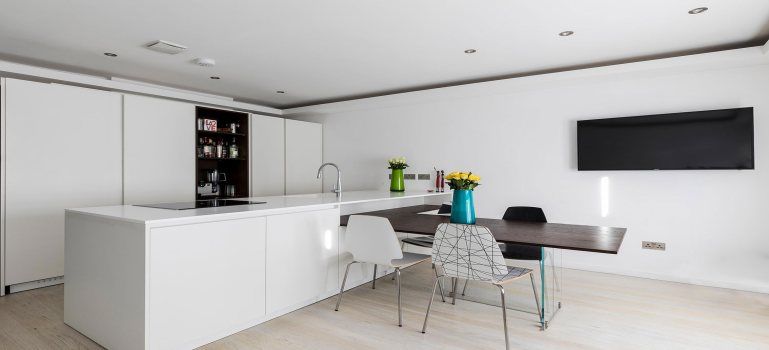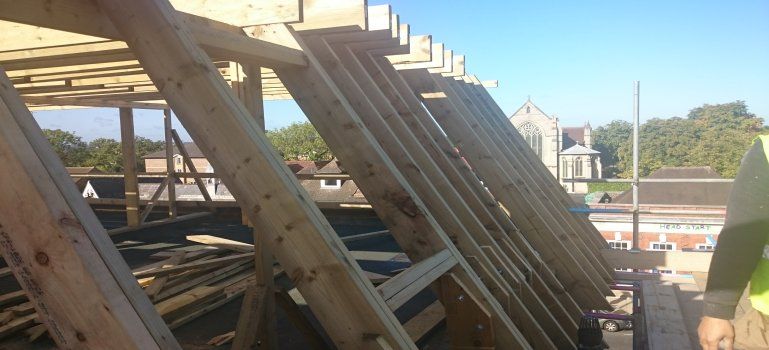How to Renovate a Victorian House – 14 Steps You Must Follow

During the reign of Queen Victoria, some of the most iconic buildings in the UK were constructed.. GIven their often ornate appearance, the demand for such properties can be high, resulting in great investment potential.
As with all ornately designed structures, Victorian buildings can often require specific competence and a greater attention to detail when planning alterations.
What type of Victorian property do you have?
The most common types of Victorian homes:
Gothic Revival
Inspired by medieval churches and castles, this style became fashionable after the design of the Houses of Parliament. Typically you can recognise them by steeply-pitched roofs, pointed arches and front-facing gables.
Italianate
Inspired by Italian villas and in contrast to other Victorian styles, these houses typically have only two floors. They are characterised by low roofs and wide eaves, often with a huge front porch, Corynthian columns and arched windows.
Second Empire
This style became fashionable when American cities started to develop in size and cultural variety. They typically have very tall facades and a mansard style roof. Typically they have a simple rectangular or square base.
Stick-Eastlake
These houses are primarily made of wood. They are recognisable by their decorative trussworks and angled wood framing. Other distinguishable elements include a pitched shingle roof and simple gables.
Folk Victorian
A combination of romantic Victorian and American homestead style, this style of house is rarely found in urban areas. Though the design is more simpler, they nevertheless retain their Victorian roots, through decoration to the porches and roofs.
Queen Anne
The most common of Victorian designs. These homes feature heavy ornamentation, porches with gables, and circular towers. Large windows are also typical and will contain both functional and decorative elements.
What changes can you make to a Victorian house
In a Victorian property, you can;
- Convert the loft
- Extend the rear and the side
- Enlarge the kitchen or living room
- Install a new bathroom or ensuite
- Convert the basement
Plus, in a Victorian property there are always minor fixes needed.
For both major works and minor fixes, it’s important to carry out the work in the most respectful manner. You want to maintain, strengthen, extend while making sure the original structure and features are not damaged or lost.
1. Repair brickwork and pointing
If your property’s exterior isn’t too badly damaged, you can restore it using breathable lime. Matching bricks from reclaimed yards can be used, in case the damage is more extensive.
For extensive repairs, the best choice is always to appoint specialists in restoring period properties.
2. Look at the plasterwork
Cornicing and plaster ceiling roses were the norm for Victorian houses. Often they can become very ornate, so that they can be more tricky to restore.
To replace damaged plasterwork or recreate part of the decorations, make sure you use the best quality materials.
There are suppliers specialised in recreating matching mouldings, roses and other elements.
It’s always better to employ specialist period decorators for the best results.
3. Restore/Replace sash windows
If your original Victorian windows are in reasonable condition, it may be possible to restore them.
If refurbishing them is neither viable or desirable t, remember that planning permission is almost always required for window replacement, especially if your house is located in a conservation area.
Replacing the windows will almost certainly mean a far greater energy performance, particularly if double glazing is an option.. However, it should be noted that many planning requirements may stipulate to change the windows like-for-like and the original frame may not allow space for a double glaze option.
4. Work on the floor
If you can retain the original floorboards, this will maximise the resale value of your property. It will also add to the feeling of space, giving your open-plan area a more modern ambience. Strip back your floorboards or visit salvage yards to find reclaimed ones.
You want to make sure to add insulation to the original flooring. You should be able to lift the existing floorboards without causing damage. It will then be fairly straightforward to drape a membrane into position and fill the space between the joists with insulation, before replacing the boards. It’s always better to appoint a professional to avoid damaging the original joists and boards, and to be able to repair any hidden damage that becomes visible during the work.
5. Repair or replace the roof
You can try to replace your roof slates like for like, or have your old roof repaired instead. If you have only a few slates to be replaced, it may be possible to recover some original ones from a salvage yard.
Remember roof repairs can have a big impact on the health of your property. Unless it’s very straightforward work, make sure you use professional roofers to do the job.
6. Restore or repair the front path
If you have only a few damaged tiles to replace, it is worth starting your search from salvage yards.
If the damage is more extensive or your original path is beyond repair, take inspiration from your neighbouring properties for the right style.
7. Update your kitchen
You can choose any style for your new kitchen and still highlight the original features in your Victorian home.
Details like cornices, alcoves, and chimney breasts can be incorporated into your new kitchen, giving it a unique character.
Choosing a traditional style will work perfectly. But you don’t have to stick to the traditional. Modern crisp lines and curves can make for a stunning kitchen and by contrasting together with the original Victorian features, they will give the room balance and character.
8. Update your bathroom
Advancements in both sanitary technology and ceramics and iron manufacturing, made the bathroom an increasingly important part of the house in Victorian times. Today, you can use period touches such as roll-tops and copper ‘slipper’ baths.
This may also be an opportune moment to update your plumb work, pipes, boilers and other bathroom fittings, so that future maintenance and durability are guaranteed.
9. Extend your Victorian home
Adding an extension is the best option to improve a dark kitchen or create more living space in your Victorian house.
If your property is not located in a conservation area and is not listed, there are many options open without the need to apply for planning permission.
For a more cost effective solution, you could opt for a double storey extension, thereby acquiring more space for a lower cost per square metre.
You can check our house extension page for more details on the process and the costs of your Victorian house extension.
10. Add space with a rear extension
Rear extensions are possible under permitted development in most cases, if you have a detached or semi-detached house.
A side return extension will also allow for more space gain, using the L-shaped space to the side of your house.
If your property is listed or you live in a conservation area, regulations for extensions are stricter, and you will need planning permission for the works.
11. Loft conversion
Victorian properties were generally built with spacious lofts, which means they are ideal for loft extensions. The steeper the pitch of the roof, the more head height you will find.
Check our loft conversion page for more details on what you can achieve with loft conversions in your Victorian house.
12. Convert the basement
Basement conversions have a limited impact on the exterior appearance and may be easier to receive planning permission for.
Converting an existing basement space is relatively straightforward, and with modern techniques you will achieve reliably waterproofed and spacious rooms.
See our basement conversion page for all the info on the process, the options and the average costs.
13. Interior decoration
When it comes to decoration, you have more choices than you think.
If you like the traditional style, you can redecorate with bathroom fittings, tiles, flooring, windows, coving etc that are reminiscent of the period, yet all modern in materials and function.
If you want a completely new feel to your home, you can go for modern and crisp fittings. The contrast can enhance the original features, increasing the character and highlighting the uniqueness of the details.
It’s always a good option to speak to a professional regarding your decoration and aesthetic ideas.
14. Structure and alterations
When you’re planning building works, major or minor, in your Victorian house, remember that old buildings can be delicate. Alterations are safer and more cost effective if they are performed by specialists. To ensure that your property will live long into the future, make sure the work is carried out with competence and respect for the original building.
How much does it cost to renovate a Victorian house?
The cost of a Victorian renovation will depend on the specifications and the finishes, especially joinery, flooring and other fittings.
Details that are specific to Victorian renovations can increase the cost compared to a standard renovation. Character bricks, Welsh slates, special coving and other plasterwork decorations add to the average prices.
Depending on the location of the property, extensions will be between £1,500 and £2,500 per square metre, loft conversions between £1,000 and £2,000.
In houseUP we specialise in renovations of Victorian buildings, especially where structural alterations are needed.
Get in touch for a free site visit and a free estimation for your Victorian renovation project
Luca is a construction manager with over 10 years of experience, graduated in Engineering and Architecture. His practical experience with his technical education give him the perfect insight into preventing problems and finding solutions for construction projects.
houseUP is a construction company in London, specialised in high end residential and commercial projects.

